Photos show how New York City's subway system has changed over the years
Joey Hadden

Inside of a New York City subway car in 1943 and a new car coming out in 2022.Bettmann/Contributor; Marc A. Hermann/MTA
- New York City's subway system has plans to add a new fleet in 2022 with wider doors and high-tech features.
- Since the early 1900s, NYC's subway system has become an iconic feature of the city.
- These photos show what the first subways looked like and chart the evolution of the transit system New Yorkers ride today.
New York City's first trains were above ground in the 1800s, according to a 2015 blog post from the New York Public Library.
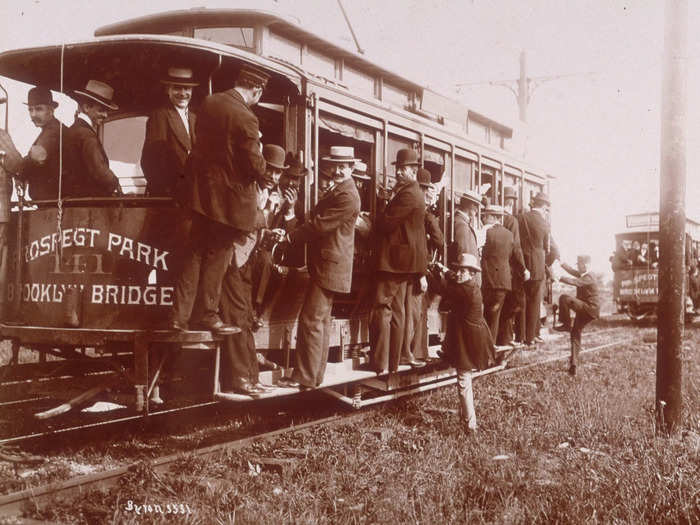
People hang from an overcrowded cable car on the Smith Street-Coney Island Avenue Line of the Coney Island to Brooklyn Railroad in 1897.
Museum of the City of New York/Byron Collection/Getty Images)
Then, towards the end of the 19th century, they went from being at street level to elevated, according to the same post.
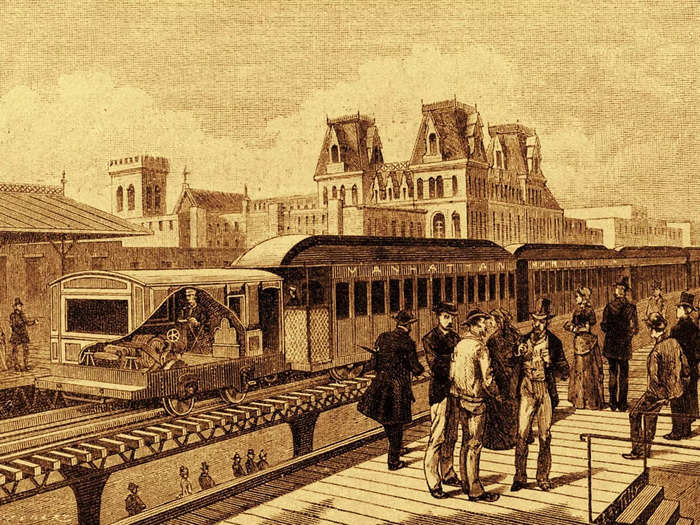
New York City's first electric train, pictured in 1885.
Culture Club/Getty Images
The Great Blizzard of 1888 highlighted the need for an underground transportation system when trains were halted and buried in snow, according to an opinion piece in the New York Tribune in March of that year.
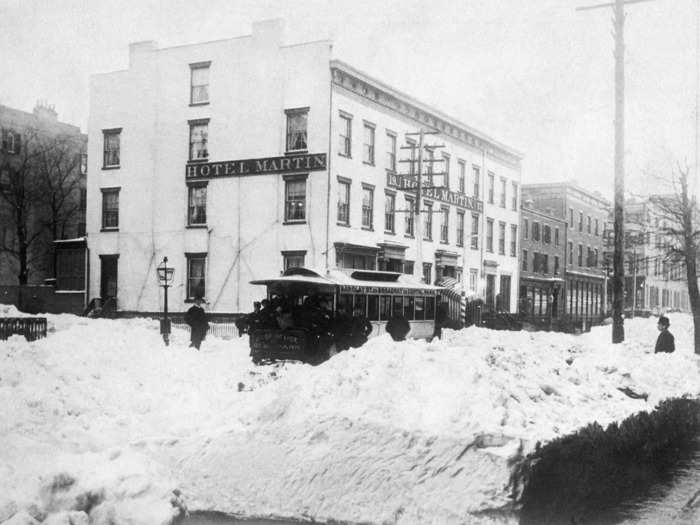
Piles of snow on the street remain after the Great Blizzard of 1888.
Bettmann / Contributor/Getty Images
In October 1904, New York City's first underground subway opened, The New York Times reported.

New York City's first subway tour ride in 1904.
Bettmann/Contributor/Getty Images
The addition of the subway made it possible for New Yorkers to get from home to work faster, increasing the amount of free time commuters had at home, according to the same article.
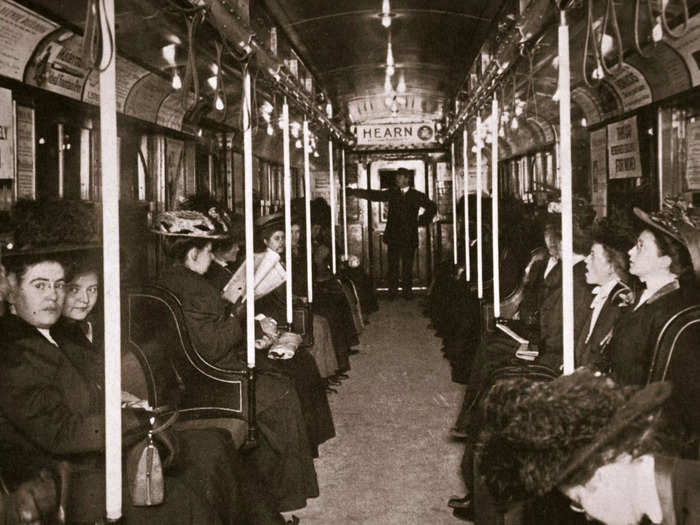
A subway car in 1903 reserved for women.
Historica Graphica Collection/Heritage Images/Getty Images
By 1925, the average New Yorker was riding the subway 276 times a year, historical author Ronald Reis wrote in his 2009 book, "The New York City Subway System."
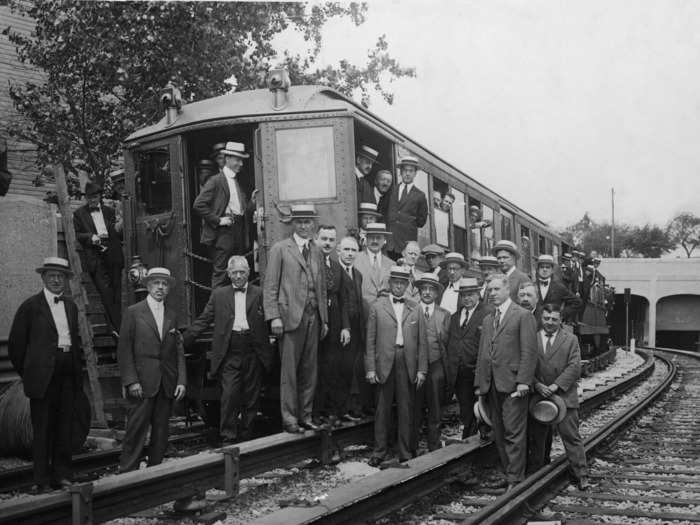
Officials of the Interborough and Public Service Commission stand in and around a subway car in Brooklyn in 1920.
Paul Thompson/FPG/Getty Images
In the 1930s, the city started a public line, IND, that swallowed the competing BMT (Brooklyn-based) and IRT (Manhattan-based) lines by the end of the decade, according to the same book.
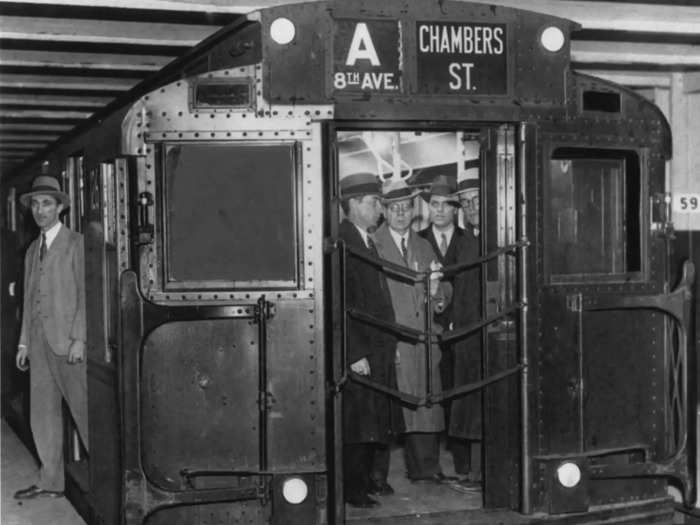
The first ride on a new subway car in 1932.
Bettmann/Contributor/Getty Images
The IND cars were faster than the BMT fleet and larger than the IRT trains, according to the New York Transit Museum.
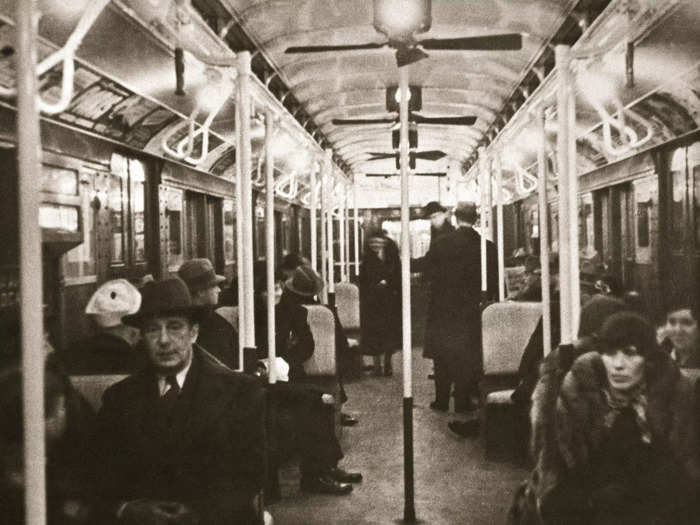
Inside a subway car in the 1930s.
Historica Graphica Collection/Heritage Images/Getty Images
Source: New York Transit Museum
The three separate subway lines merged into the New York City Transit Authority in 1939, according to Reis' book.
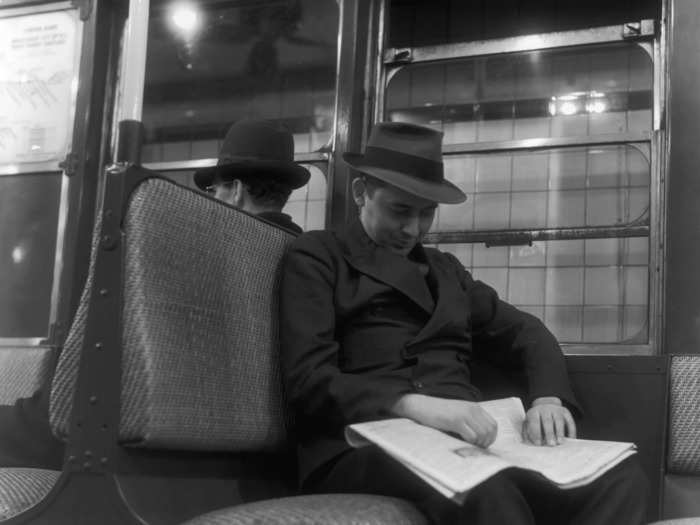
A man holds a newspaper while riding a subway on the Eighth Avenue line in New York City in 1940.
Hulton Archive/Getty Images
In 1953, New York City introduced the subway token to replace the coin system at the turnstiles, New York Public Radio reported in 2012.
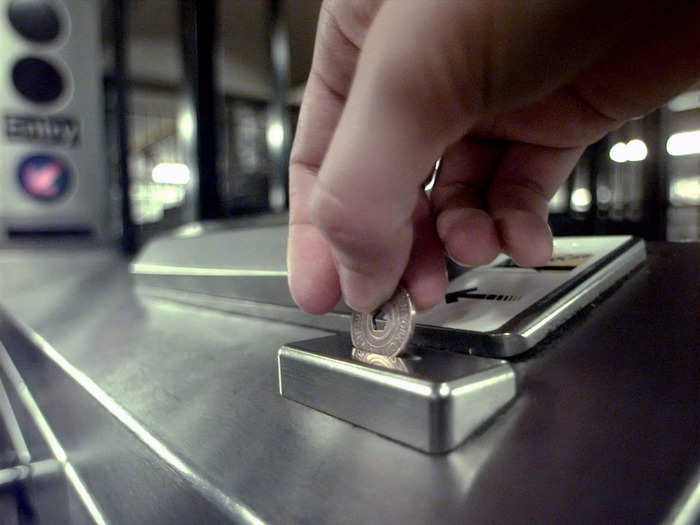
Subway tokens entered the system in 1953.
Gerald Herbert/NY Daily News Archive via Getty Images
Source: New York Public Radio
Trains in the 1950s had porthole windows, according to the New York Transit Museum, giving them a nautical look.
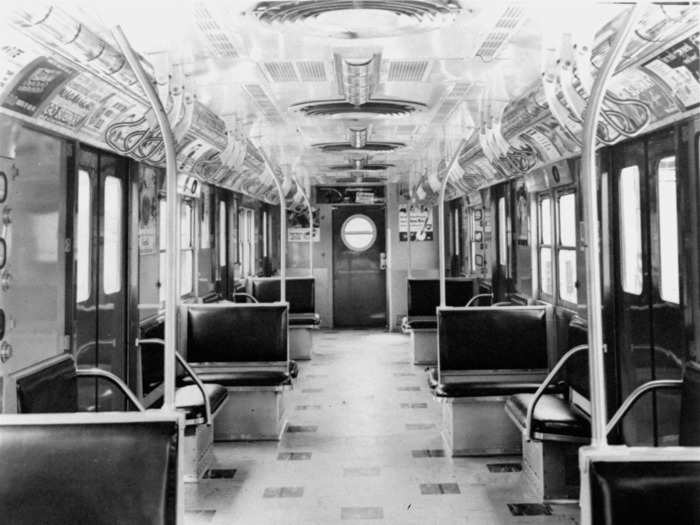
A brand-new subway car in 1954.
AP Photo
Source: New York Transit Museum
Before the 1950s, subway cars didn't have air-conditioning. Instead, they were cooled with fans.
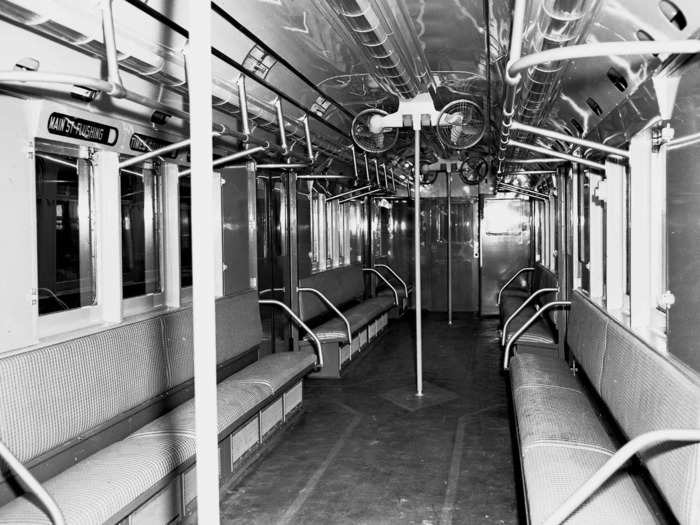
New subway cars in 1948.
NY Daily News Archive via Getty Images
In the mid-1950s, the city installed air-conditioning in subway cars for the first time, according to the New York Transit Museum.
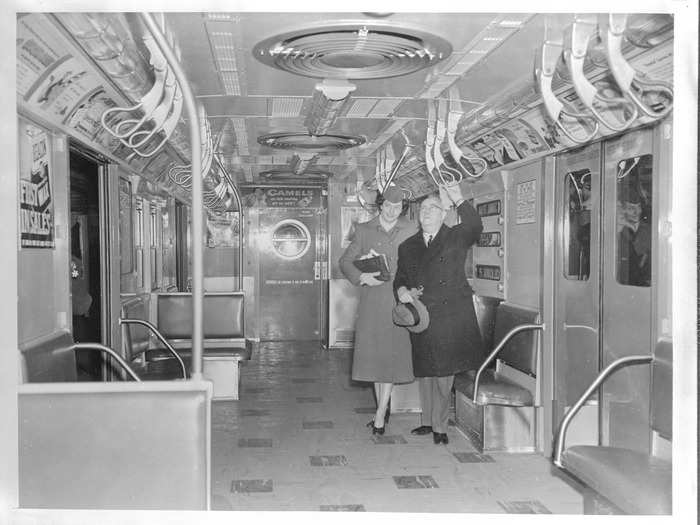
William Fullen, member of the New York Transit Authority, rides a new car in 1955.
Bettmann / Contributor/Getty Images
Suorce: New York Transit Museum
But the air-conditioning failed within two weeks, with water dripping onto passengers, according to the same source. So, it was removed.
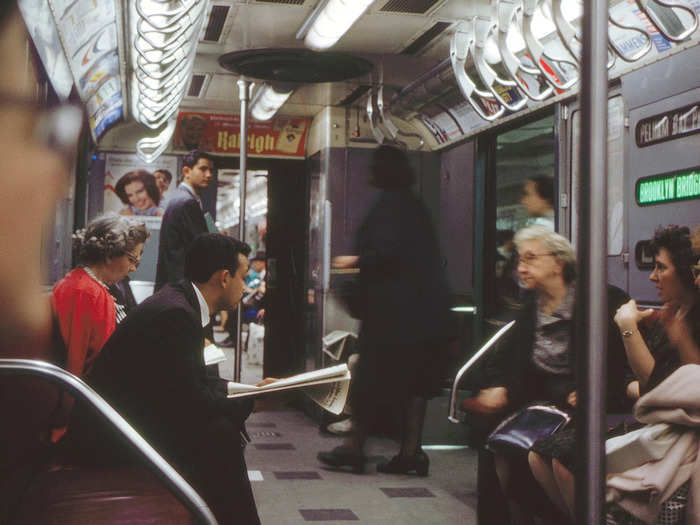
Inside a subway car in 1961.
GHI/Universal History Archive via Getty Images
Source: New York Transit Museum
The first successful air-conditioned subways hit the rails in 1967, the Daily News reported in July of that year, adding that it made the ride 20 degrees cooler.
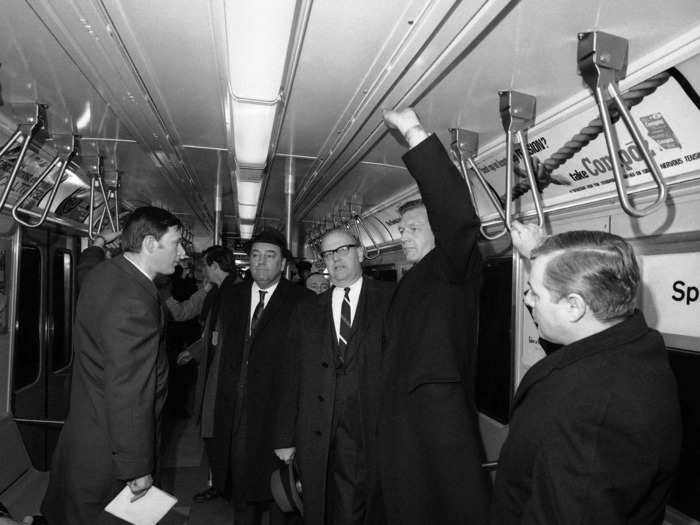
New York Mayor John V. Lindsay, right, accompanied by William Ronan, center, and newsmen, tests out a new air-conditioned subway train during a trial run in 1969.
AP Photo/OR
By the 1970s, graffiti artists had "turned the city subway system into the world's largest doodle board," The Sun reported in 1972.
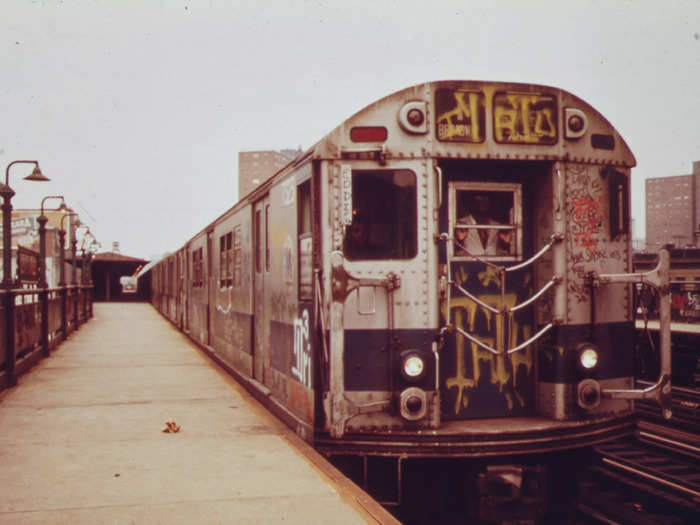
A subway marked with graffiti pulls up to an above-ground station in the 1970s.
Smith Collection/Gado/Getty Images
Source: The Sun via Newspapers.com
The city painted many subways red to cover up the markings, The Daily News reported in 1972.
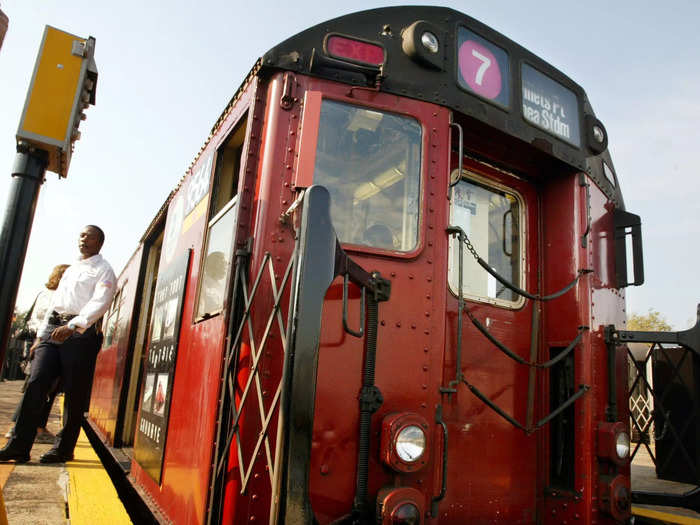
The last "Redbird" subway train, pictured here after making its final trip and before being retired in 2003 in New York City.
Mario Tama/Getty Images
Source: Daily News via Newspapers.com
But graffiti artists kept using freshly painted subways as blank canvases, The Daily News reported in 1980.
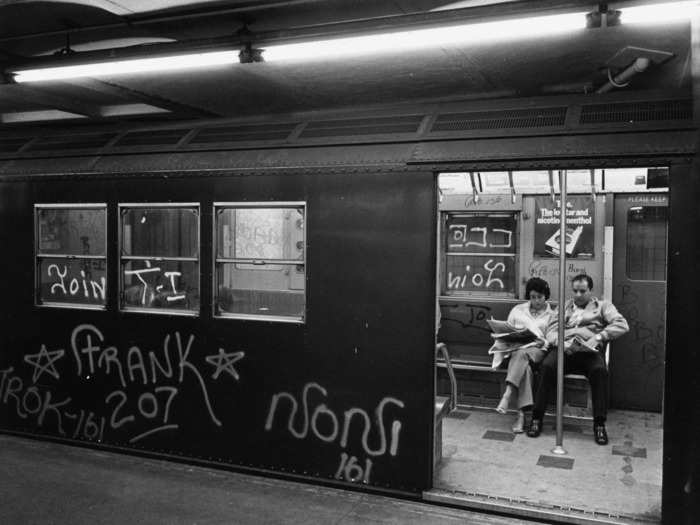
A subway car marked with graffiti waits at a station platform in 1972.
National Archives/Getty Images
Source: Daily News via Newspapers.com
This went on until the end of the 1980s, when the city increased security and sped up efforts to clean the marked cars, The New York Times reported in 1988.
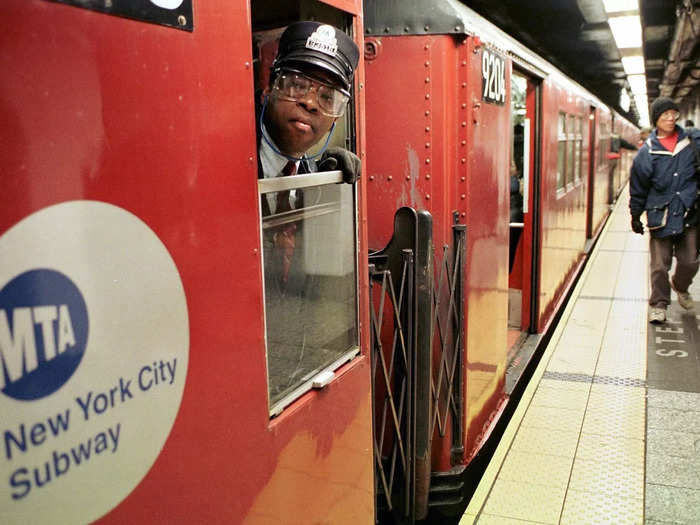
A number 5 train at Grand Central Terminal in 1999.
STAN HONDA/AFP via Getty Images
Source: The New York Times
"If a train on a clean line was hit, it was taken out of service immediately until it was cleaned," the article reads.
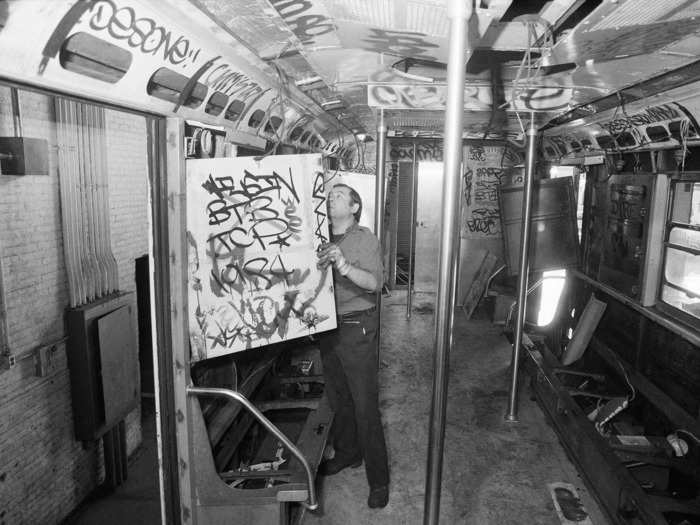
A worker dismantles the interior of a subway car in New York City in 1988.
AP Photo/Warren Jorgensen
Source: The New York Times
According to a 1989 New York Times report, the New York Transit Authority said that the subways were graffiti-free at the time.

A Broadway local train in 1989.
AP Photo/Warren Jorgensen
Source: The New York Times
Also in the 1980s, the city came out with train cars that still serve the 3, B, D, and G trains today, according to Curbed New York.
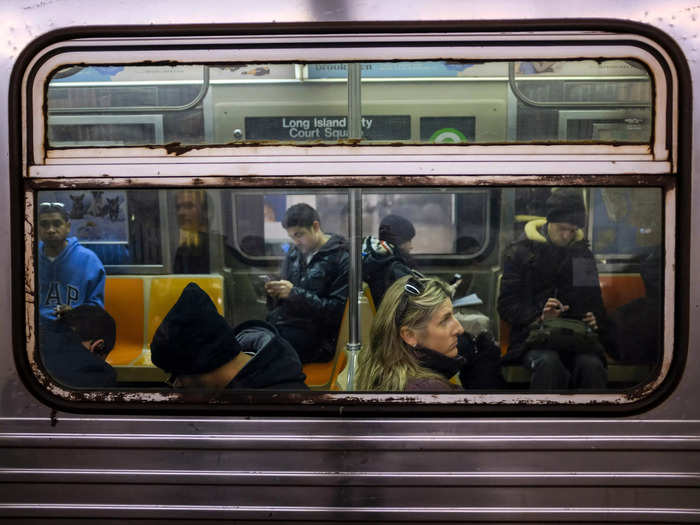
Passengers ride the G Train at the 7th Avenue subway station in 2018.
Drew Angerer/Getty Images)
Source: Curbed New York
In the early 1990s, the MetroCard - a modern token of NYC life - was first introduced, The New York Times reported in 2008. Unlimited cards weren't introduced until 1998, according to the same article.
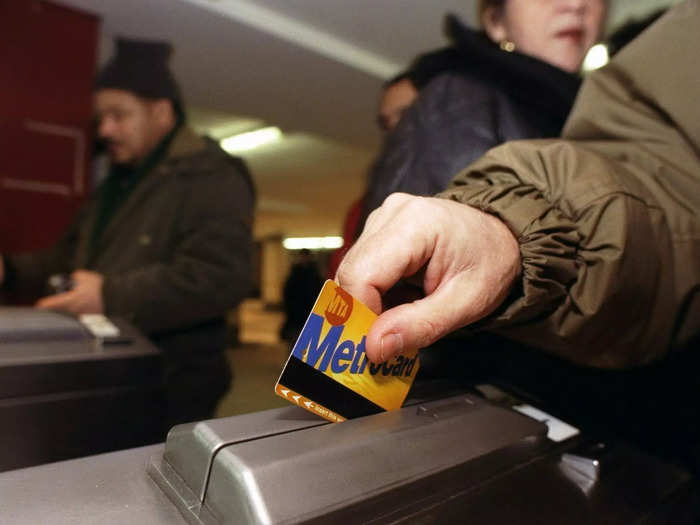
MetroCard users at the Rockefeller Center subway station.
Linda Rosier/NY Daily News Archive via Getty Images
Source: The New York Times
Jack Lusk, senior vice president for customer service at the city's Transit Authority, told The New York Times in 1993 that the cards would be "the biggest change in the culture of the subways" since the three systems unified in 1939.

Inside a subway car in 1996.
Bonn -sequence / ullstein bild via Getty Images
Source: The New York Times
The new millennium brought in a new subway fleet, The New York Times reported in 2000.
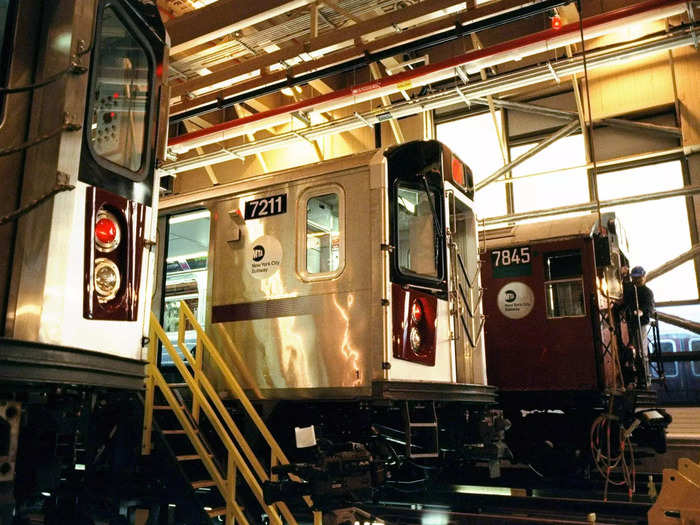
The new millennium subway cars, pictured next to an older model on the far right.
Bud Williams/NY Daily News Archive via Getty Images
Source: The New York Times
The new cars had wider doors, according to the same article, and flip-up priority seating, according to the subway's new car procurement contract.
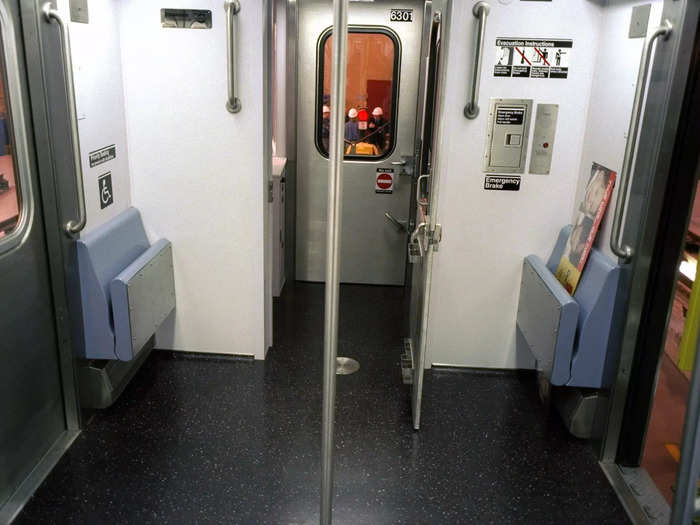
Priority seats on the new millennium cars.
Budd Williams/NY Daily News Archive via Getty Images
The new cars also brought digital directions to life, The New York Times reported, including signboards, a public-announcement system, and light-up maps that showed riders their location.
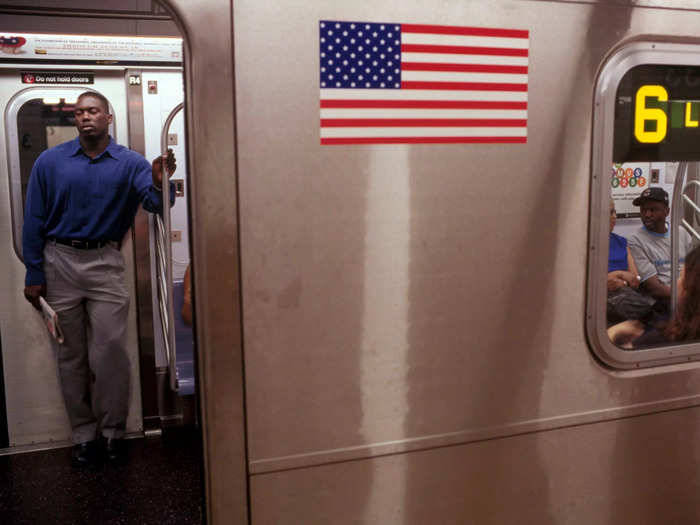
A subway car in 2002.
David Butow/Corbis via Getty Images
Source: The New York Times
Five years later, the newest cars on the tracks came out with digital boards that showed riders the order of stops and where they were, The New York Times reported in 2005.
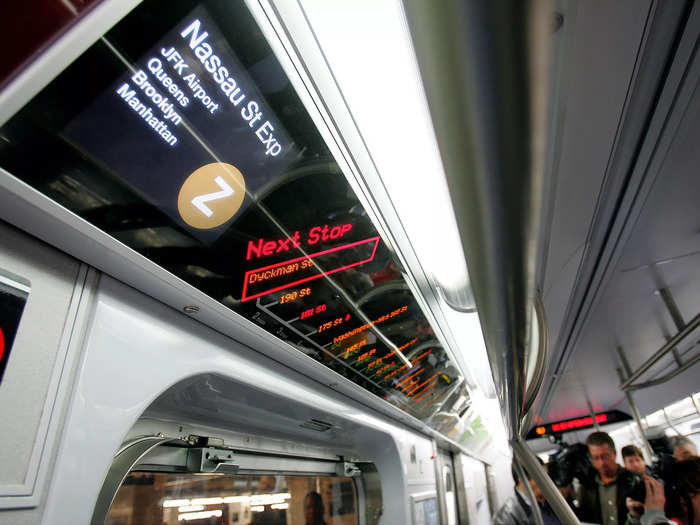
A new subway train that came out in 2005.
Craig Warga/NY Daily News Archive via Getty Images
Source: The New York Times
Commuter Maria Romero told The New York Times that new cars felt "three times more advanced" than the subways on her daily route. Aside from updating fleets, as Gothamist reported in 2006, this was the last time there were new subway car models.
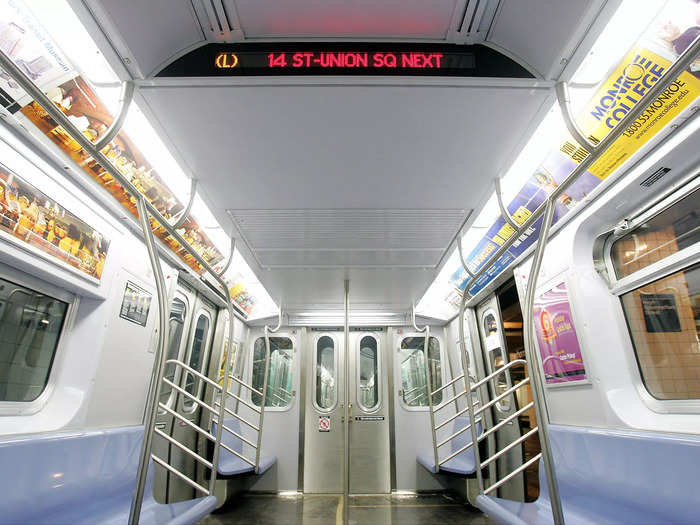
Inside a subway car from 2005.
Craig Warga/NY Daily News Archive via Getty Images
Source: The New York Times, Gothamist
In 2022, the city plans to release its most advanced subway cars yet, according to a MTA press release from July 2021.
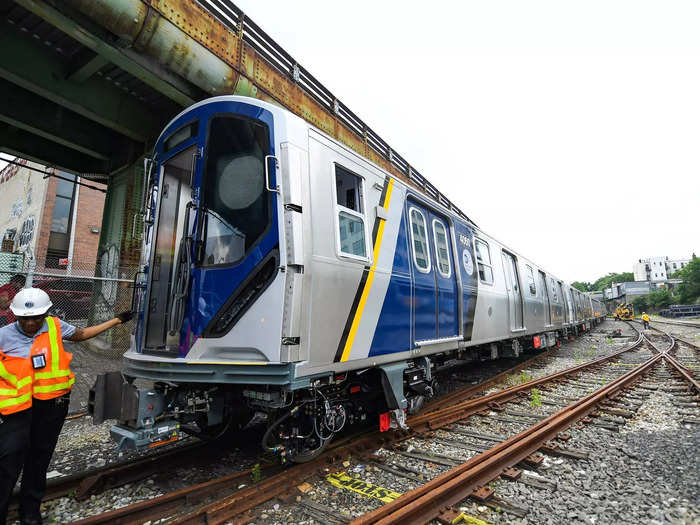
The new subway cars that are set to come out next summer.
Photo: Marc A. Hermann / MTA
Source: MTA
The doors will be 8 inches wider than subway cars on the rails today, according to the same press release, which says there will also be an upgraded digital screen.
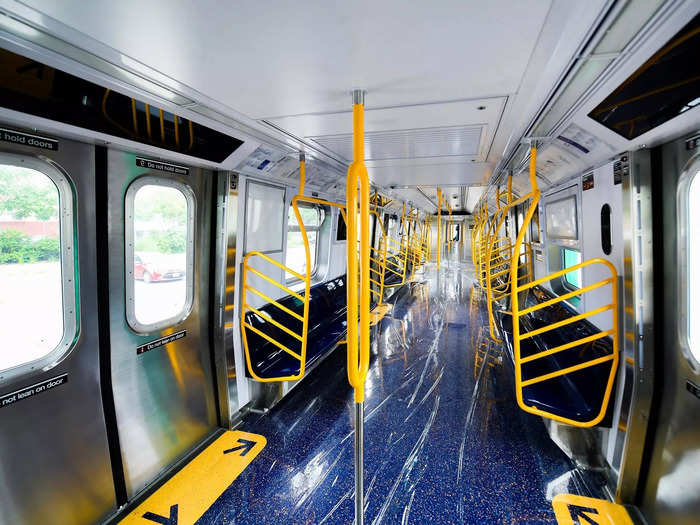
Inside the newest subways that are expected to make their debut in 2022.
Photo: Marc A. Hermann / MTA
Source: MTA
The cars are set to come out next summer, and eventually some of them will have open gangways instead of doors between cars, according to the same press release.
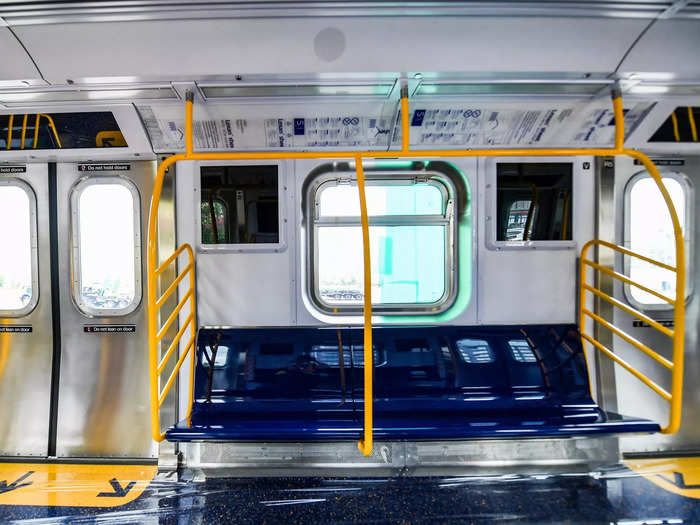
Seats in the new subway cars.
Photo: Marc A. Hermann / MTA
Source: MTA
In another July press release, the MTA announced that the cars will have a larger space reserved for people who use wheelchairs. Wider doors will also make these trains more accessible for people who have disabilities, according to the MTA.

People test the new subway car's priority seating.
Marc A. Hermann / MTA
Source: MTA
READ MORE ARTICLES ON
Popular Right Now
Popular Keywords
Advertisement